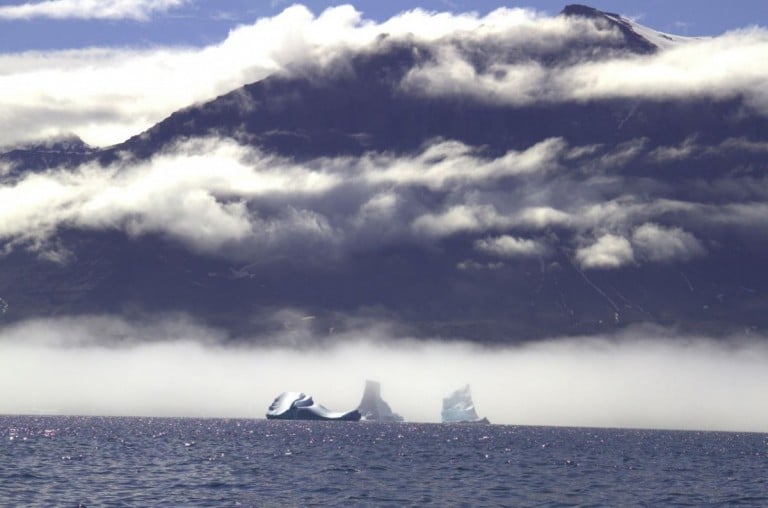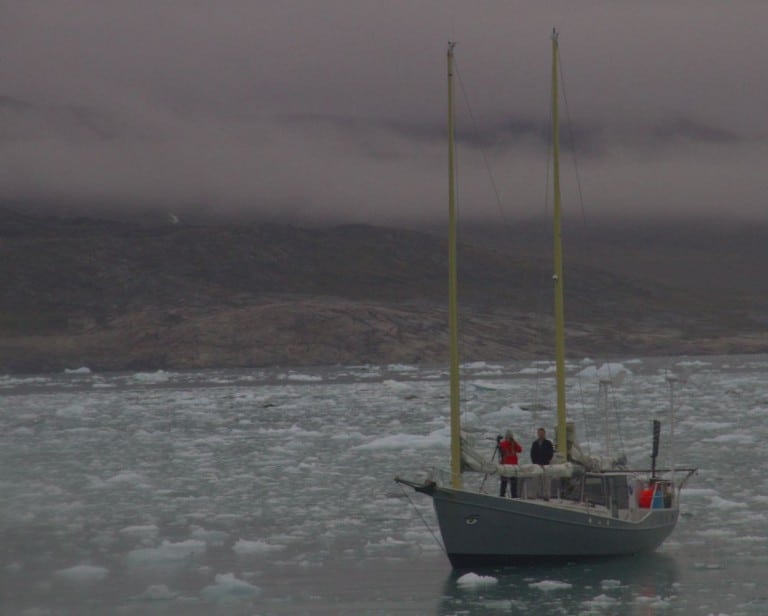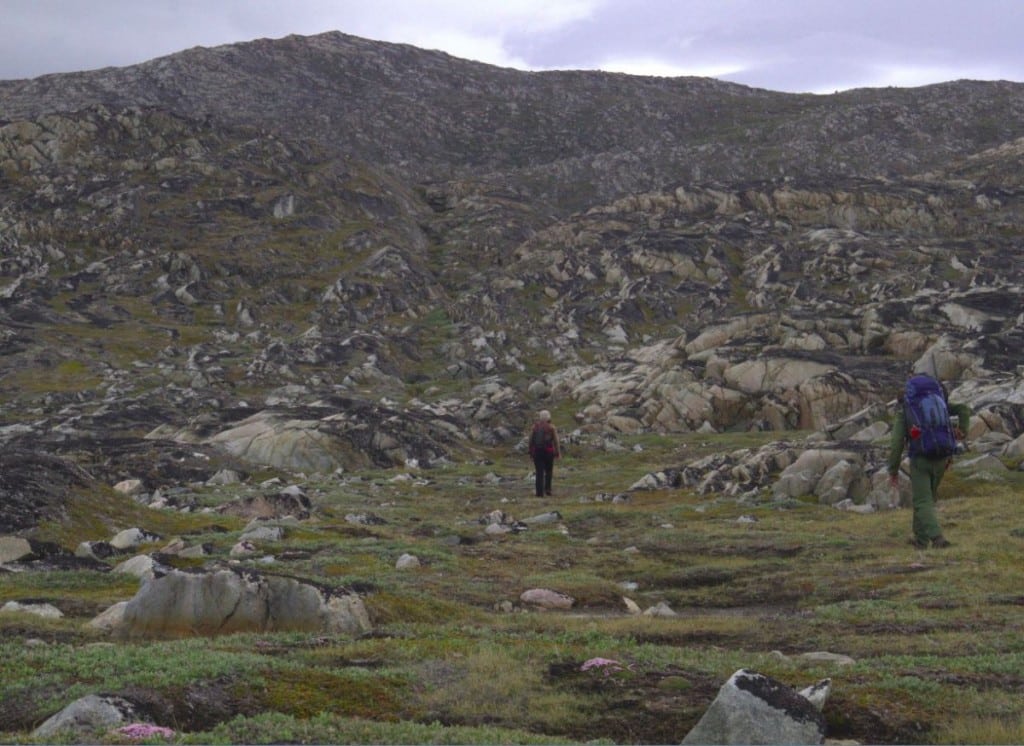
It’s important to understand the rate (or speed) that a glacier travels. The faster a glacier is moving the more icebergs it will create. If a glacier is losing more ice than is being replenished it will thin out and recede. So by understanding the rate of a glacier you can better understand the health of the glacier. Satellite imagery will only tell you so much, it’s important we try to find new ways to get a more detailed understanding of the rate a glaciers is moving.
We owe Dr. Clark Richards and RBR big time. If it wasn’t for their help and generosity we wouldn’t of had the CTD (conductivity, temperature, depth probe) needed to collect data for NASA; this year or last year. Professional grade scientific equipment is very expensive, especially if you want to lower it deep in the water. The deeper you want to lower a probe the stronger it has to be to handle the pressure, so the price increases. It’s the same with our sonar system, deeper = more expensive. The fjords in Greenland can be thousands of feet deep; our equipment has to be capable of handling those depths.
Our latest scientific objective was Dr. Clark Richards’s brain child. Clark is working in collaboration with Woods Hole Oceanographic Institute and Ocean Research Project is the third party in this equation who is deploying the sensors. RBR’s makes a pressure sensor called “Solo” that can detect minute differences of pressure in the water. His idea is to deploy these pressure sensors near glaciers and when a glacier calves off an iceberg it will create a wave. The wave creates a difference of pressure and the “Solo” sensor will record that difference. Basically it will count the amount of times a glacier calves off an iceberg. This is a new enough idea that Clark is still trying to prove that this can really be done and create a scientific method. The data will help scientists understand the glaciers rate.
Deploying the sensors is easier said than done.
We left Sisimiut and sailed north. During the first watch we didn’t see any ice, 12 hours later we could see 30 icebergs without even moving our heads. When you start your expedition at the Arctic Circle it doesn’t take long to get into the ice.

We stopped briefly in Godhavn AKA Qeqertarsuaq, to celebrate Greenland day. We heard there was a party on the beach but our intel was wrong. After a quiet day on anchor working on the boat we pushed back out to sea heading to our sensor deployment site in NE Disko Bay.
We sailed into a fjord behind a large island that leads to many other fjords with random rocky islands strewn about. We saw islands on our charts that didn’t exist in reality and an island that did exist that wasn’t on our charts; charts for Greenland are often sketchy at best. (Our tracking device stopped working for a few days due to faulty wiring, my fault, so you can’t see where exactly we went via the tracking device on the website)
At the end of the fjord there are a series of glaciers so the deeper into the fjord we went the heavier the ice became. Our objective was an island near the glaciers we were calling Arrowhead Island due to its shape. The plan was to deploy half of our RBR “Solo” sensors along the eastern side of this island; the problem is the ice is so think along that side that we couldn’t get there with Ault. Lynker Technologies sponsored us with a Phantom 4 drone we could use for aerial reconnaissance (and cool cinenmatography). Because the islands in Greenland are rocky, mountainous and lacking topographic maps this was a prefect opportunity to do some aerial recon. Nikki and Dana flew the drone several times along the east side of the island and found a route that they could take on foot to deploy the sensors. I had to stay with the vessel because large pieces of ice were drifting into the anchorage threating to trip our anchor leaving us shipwrecked on the rocky shore of an uninhabited island.
So Nikki, Dana and Alex left with backpacks full of line, weights to hold down the sensors, food and camera gear. The terrain makes for a unique hiking experience because it is mostly covered in a thick peat like moss; your foot will sink a good six inches with every step. It’s like walking on a trampoline or an old mattress. 12 hours later after they hiked 15 miles including nearly 4,000 feet of elevation change without a trail they returned to the vessel. They were covered in blisters and they said the mosquitoes were so thick that they were inhaling them us they were trying to breath. The mosquitoes were able to bite Nikki through her pants; her legs were covered in bites.
I prepared a red Thai curry and scotch on the rocks (the rocks were from broken up icebergs) as they deserved a good meal and stiff drink.
We had to move anchor several times in the little cove we were in because large bergs kept coming in and threating the vessel. This is just a normal part of the routine when anchoring near heavy ice.

We left Arrowhead Island and tried to deploy the other half of the sensors near a glacier to the north but we found the way blocked by ice. It wasn’t just the ice that was the problem, there were several islands that were constricting and confusing the current. Icebergs were zooming around this way and that at 3-4kts, one of which came up from behind and nearly ran us over. Ault was also getting pushed around by the current so we turned tail and ran back the way we came.
Instead we deployed the rest of the sensors at a southern glacier that didn’t have any crazy currents but did have a large amount of ice. At times we were pushing through ice so think that there wasn’t one square foot of clean open water to be seen. It’s a very slow process. One person stands on the bow with a long whisker pole in hand pushing large chunks of ice away as they give directions via a handheld VHF to whoever is steering the boat. When we got to a deployment site Nikki and Dana would jump in the dinghy, row to land, and deploy a sensor in roughly 6-15 feet of water. Twice they had to row through icy water that was more ice than water, but our dinghy held up just fine (it’s rather indestructible). It took us 18 hours of navigating heavy ice before we had all of the sensors deployed and we were back in relatively ice free waters.
We continued north towards Upernavik having to stop once to drop anchor next to a 1,000 foot cliff due to heavy fog, but finally we arrived in Upernavik and tied off to a gnarly seawall. Tomorrow we will push out into Baffin Bay, head to a gyre within the bay and do some micro plastics trawls. It will be interesting to see the amount of microplastics that are coming up from the Atlantic and accumulating within this gyre.
Fortitudine Vicinimus
–Matt Rutherford








